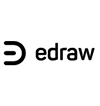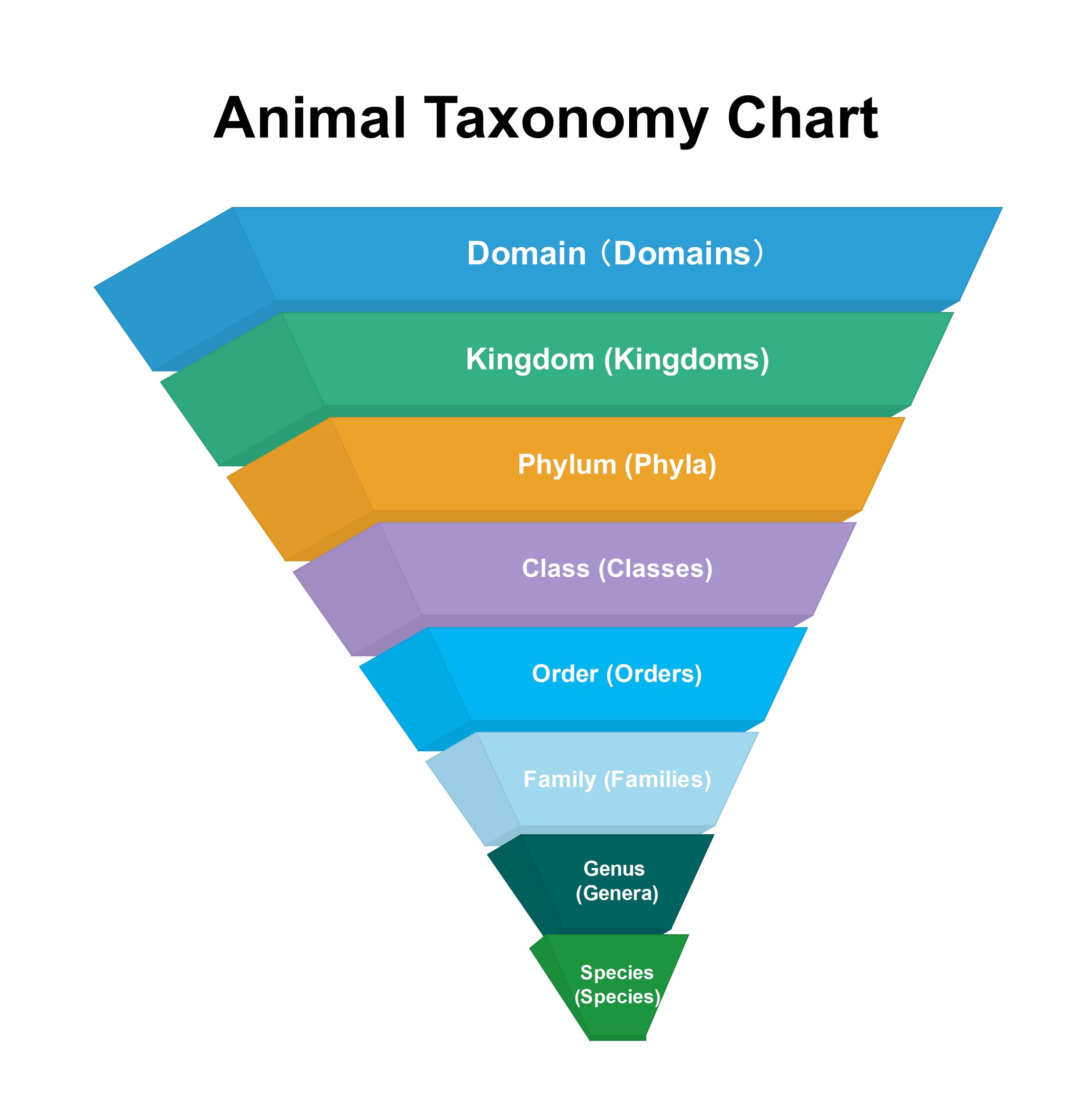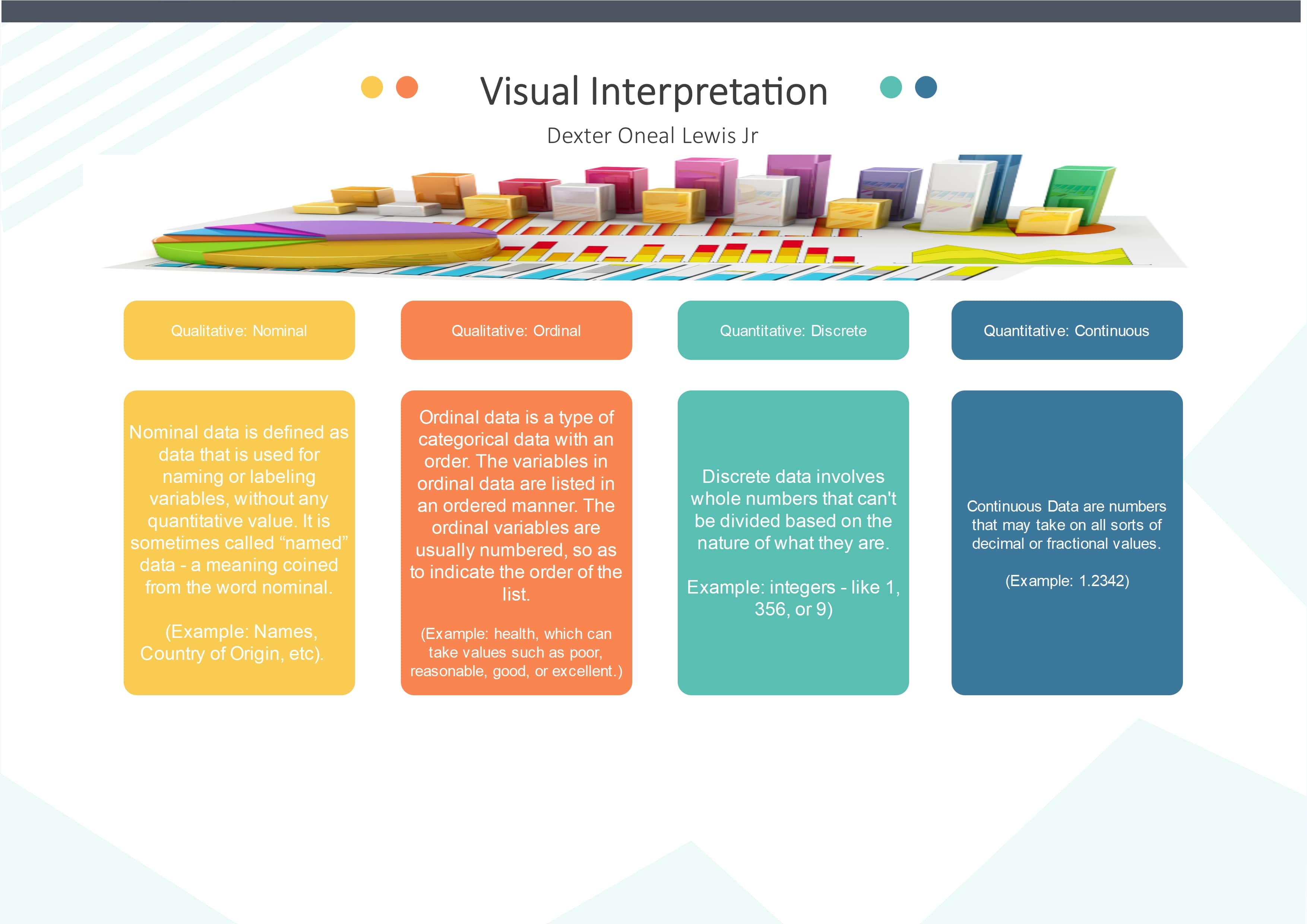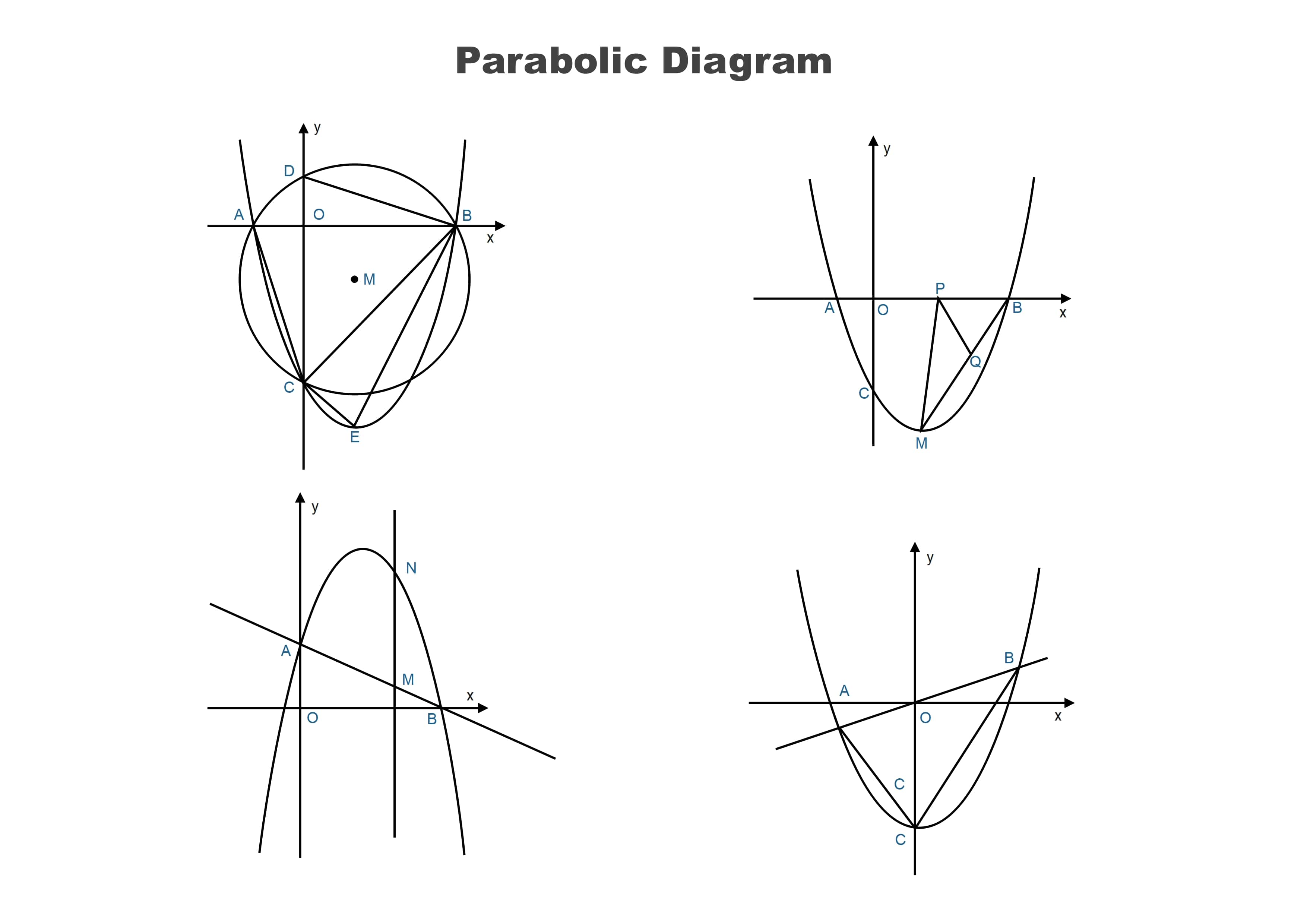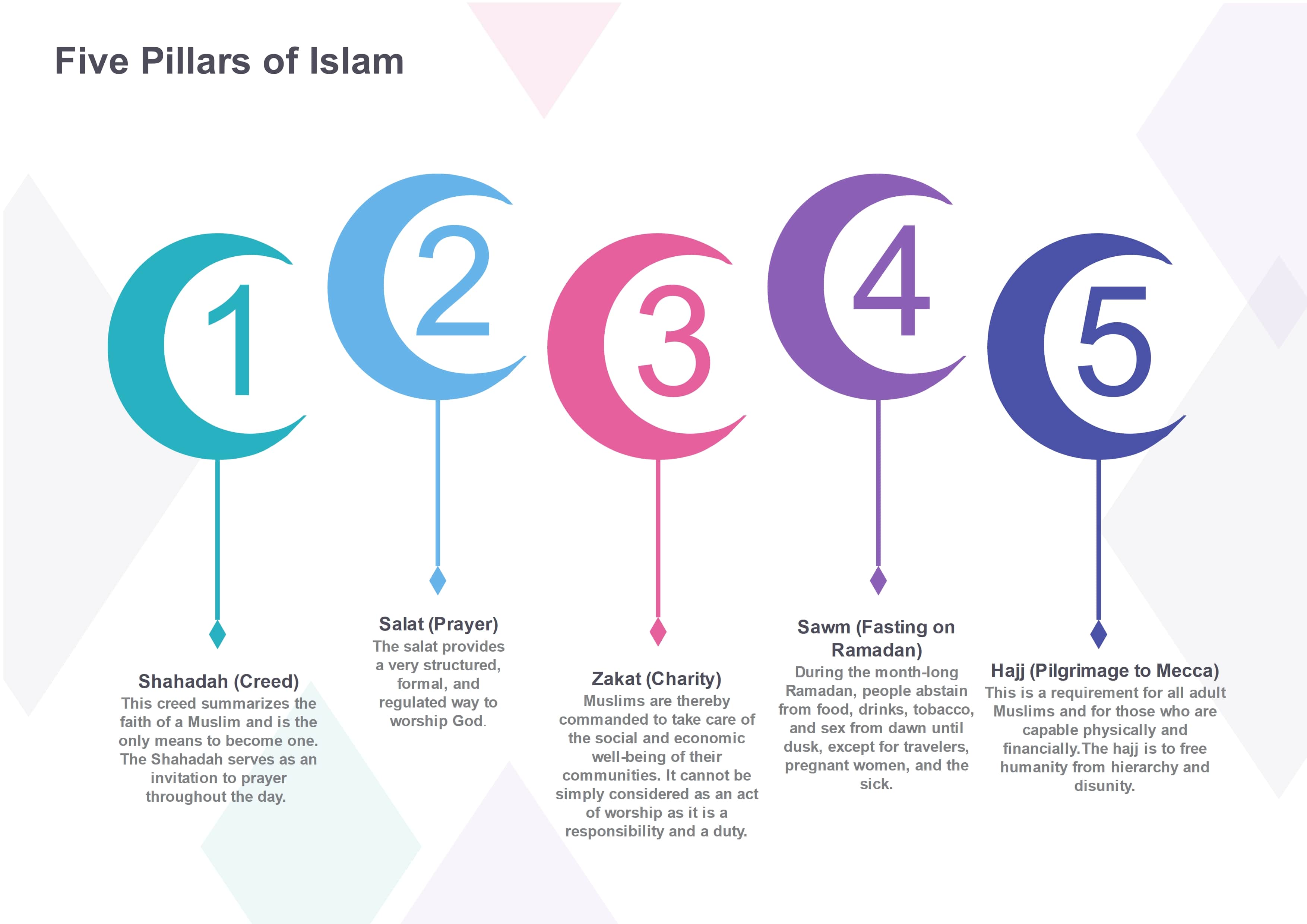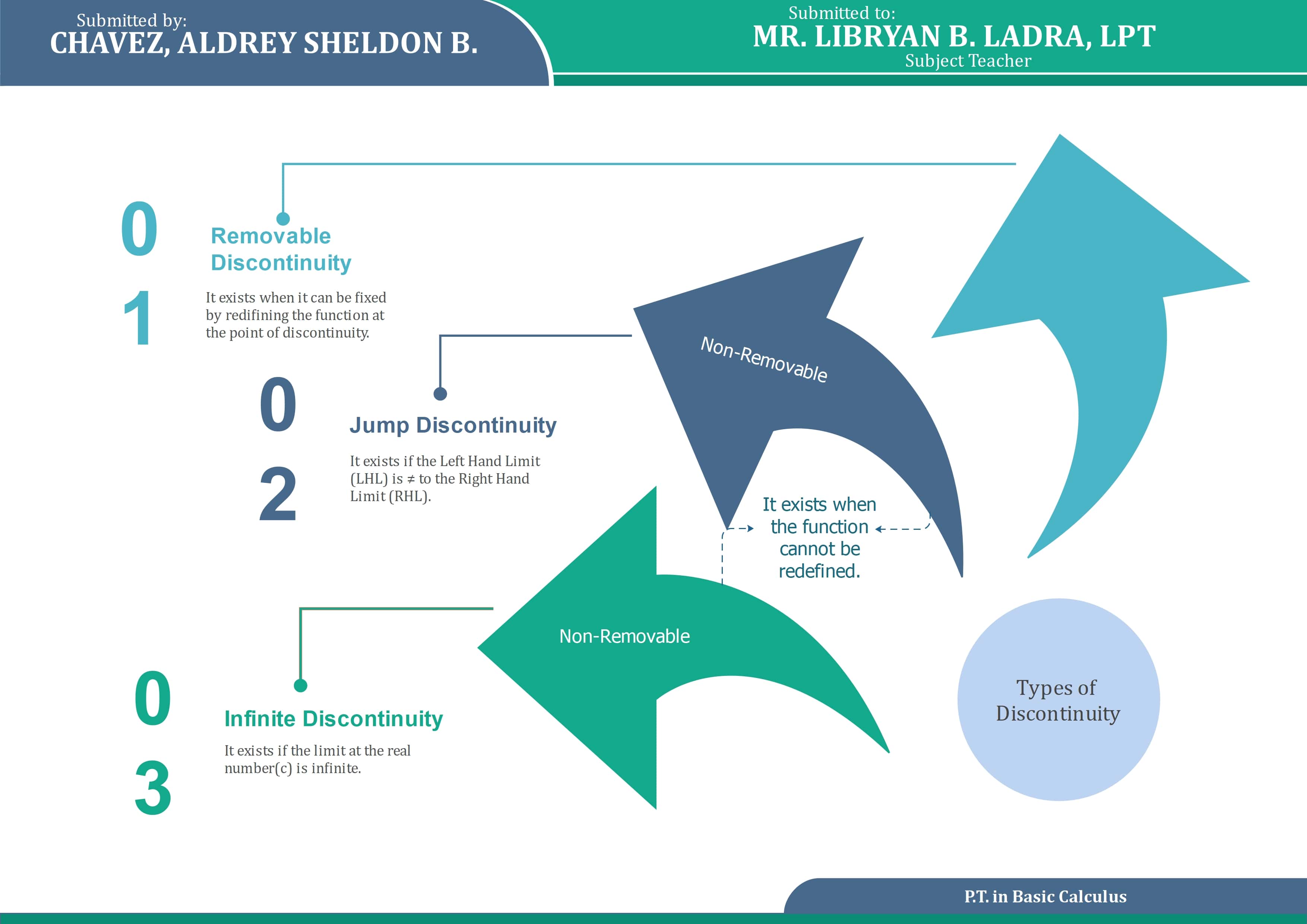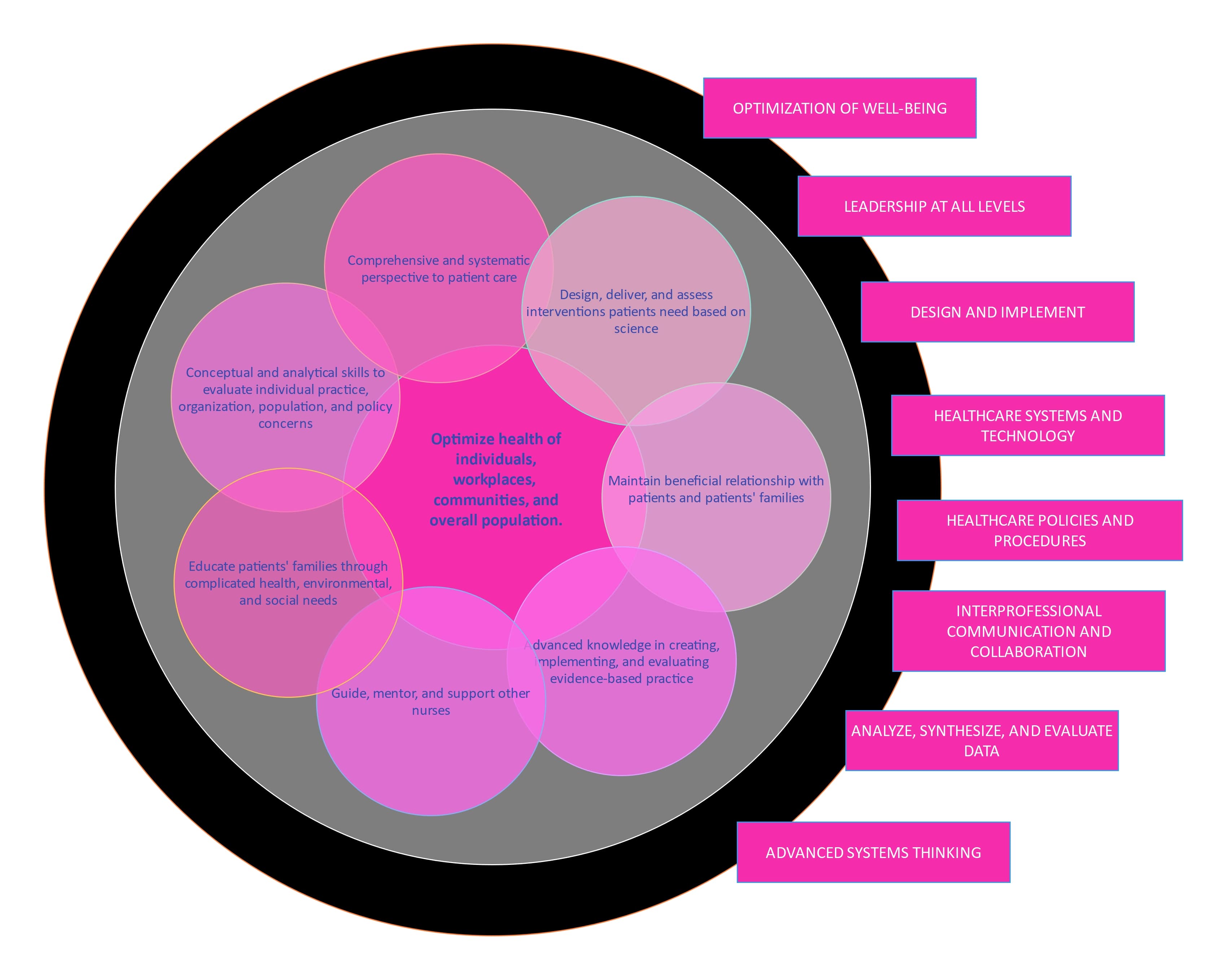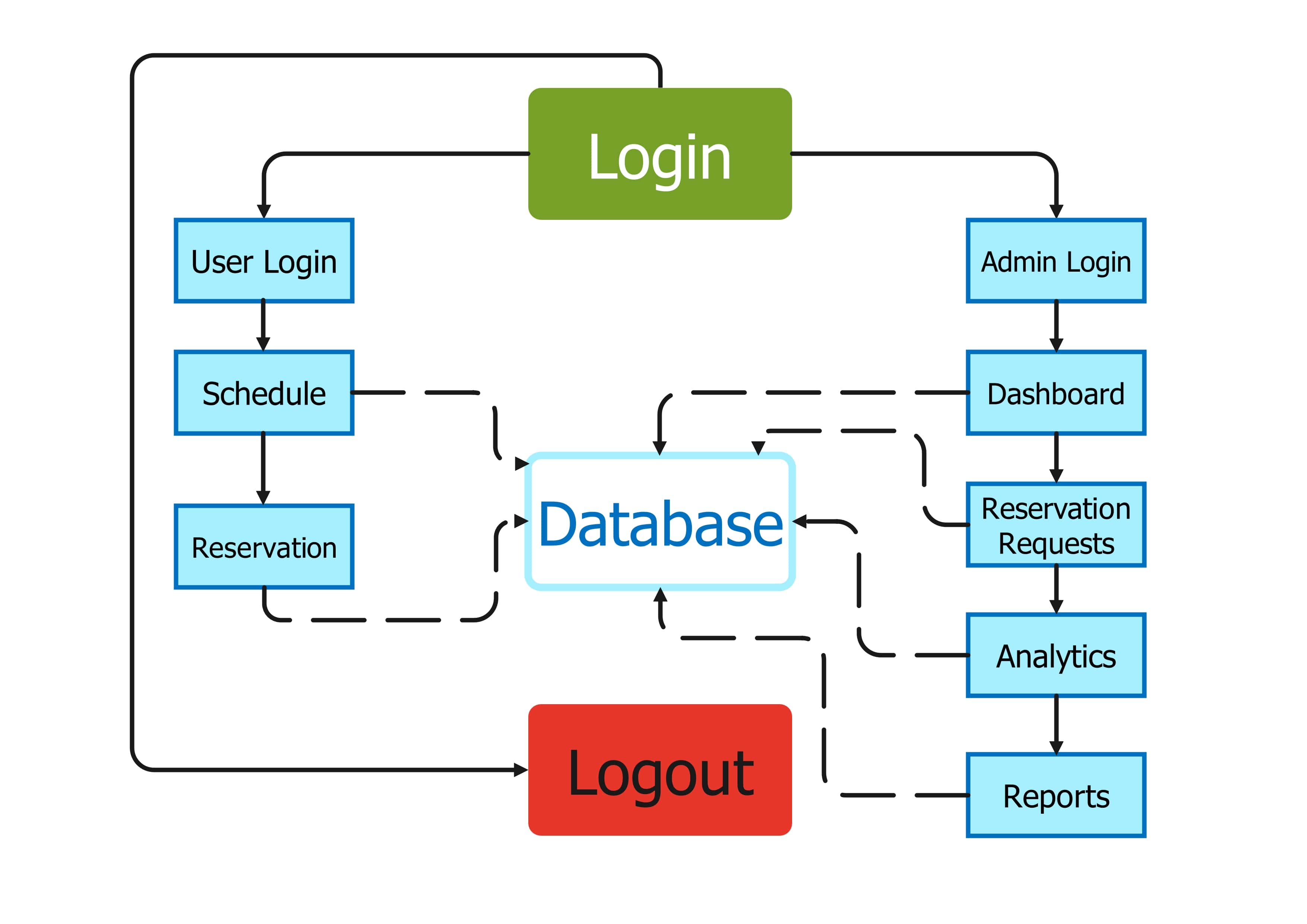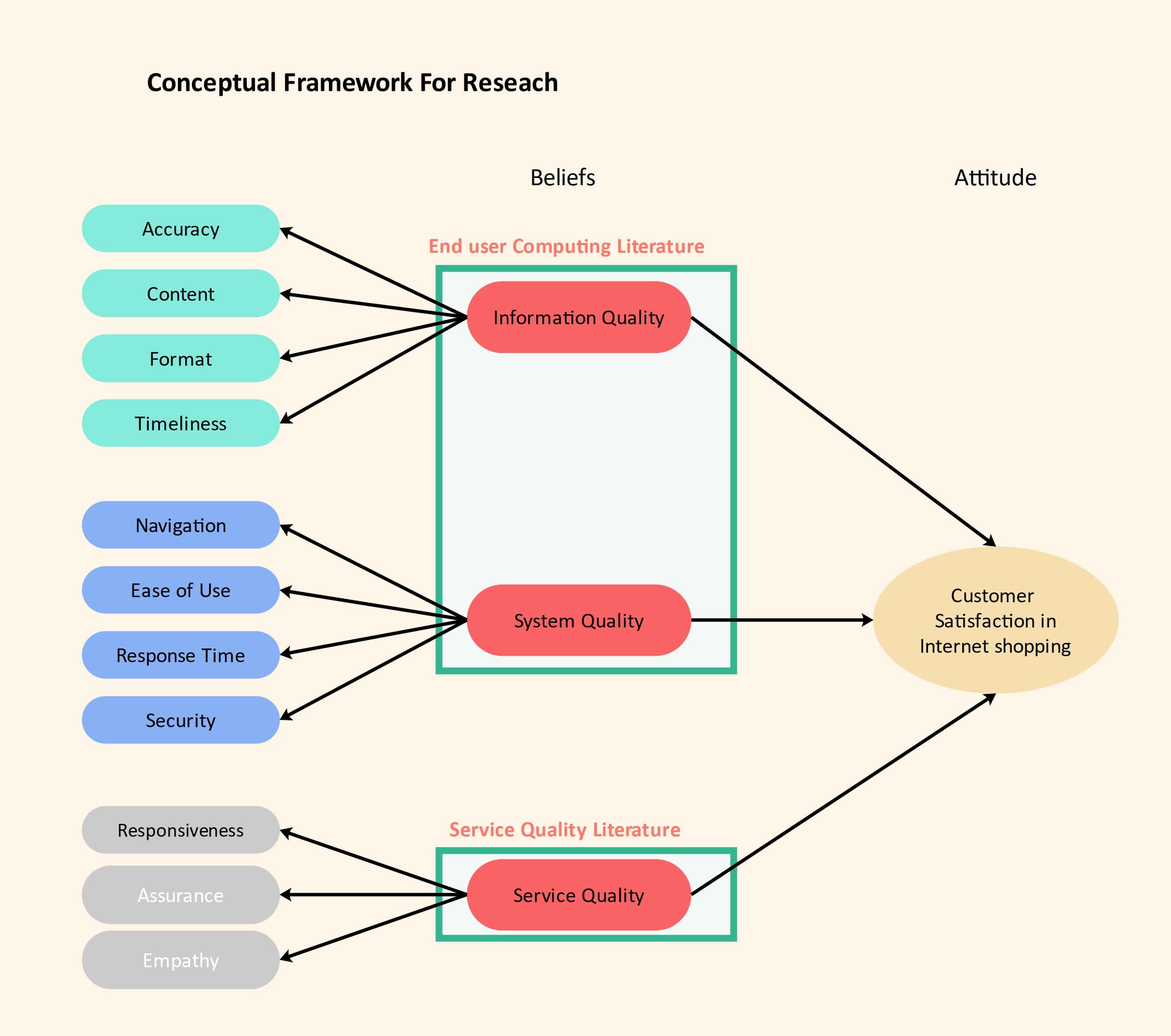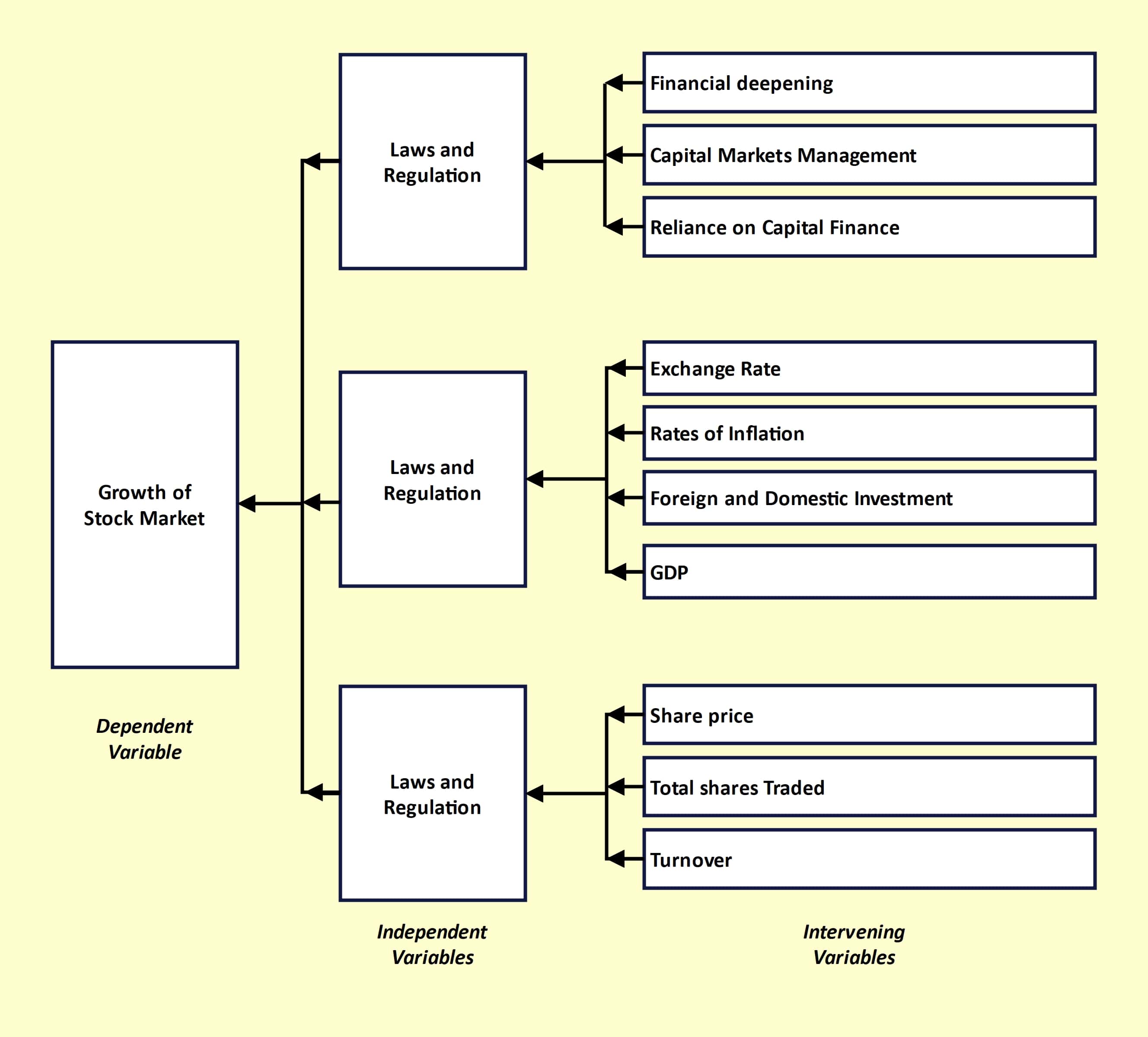A conceptual framework diagram depicts the expected relationship between various variables. It defines the relevant objectives for a research process. All while mapping out how they’ll come together to draw coherent conclusions.
In simpler words, researchers conduct studies to speculate on the dependence of variables. The best way for them to convey such complex relationships is to use a conceptual framework.
In this article, we will look at everything you need to know about a conceptual framework. Its components, examples, and how you can easily draw one using EdrawMax.
In this article
- What is a Conceptual Framework?
- The Purpose of Using a Conceptual Framework
- Types of Conceptual Framework
- Conceptual Framework vs. Theoretical Framework
- Conceptual Framework Examples
- Key Steps to Making a Conceptual Framework (Before Using Software)
- How to Make A Conceptual Framework? (With EdrawMax)
- Advantages and Disadvantages of a Conceptual Framework
- Final Thoughts
What is a Conceptual Framework?
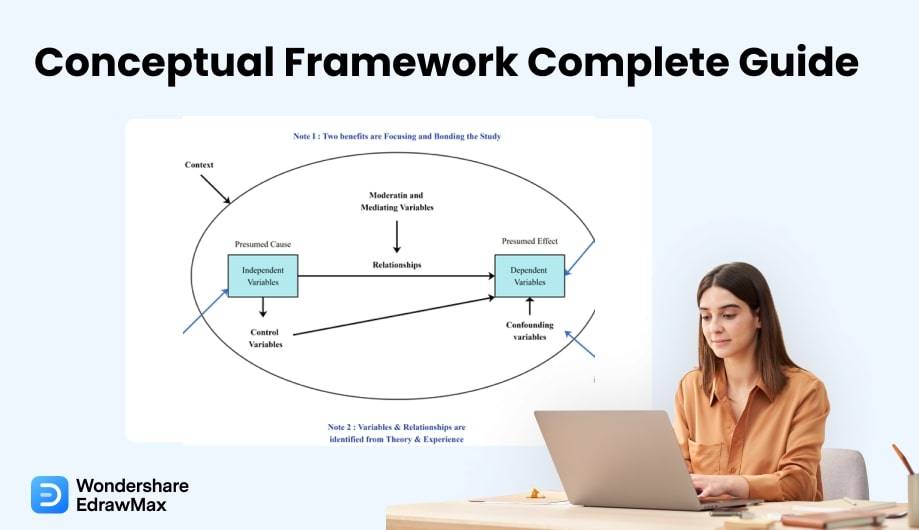
A conceptual framework is a roadmap for researchers. They can use it to analyze factors and get a comprehensive understanding of them. It can also be in a graphical or narrative form, showcasing the key variables or constructs. This analytical tool helps guide and present key ideas, theories, and their relationships. Its structured approach in each context makes it useful in many fields of work.
For instance, consider a study exploring the academic outcomes of high school students. The researcher might construct a conceptual framework involving variables such as
- availability of learning resources
- level of parental engagement
- teaching methods
- peer influence, etc.
The framework would then map it out. Based on how each of these variables (individually or collectively) influences academic achievement.
The Purpose of Using A Conceptual Framework
The purpose of a conceptual framework is simply to organize and illustrate knowledge. Think of it as a blueprint. One that connects the dots between a study and how you believe the different parts are related.
Irrespective of the field of study, their importance can’t be overstated. A strong conceptual framework provides a logical flow of information. This, in turn, makes it easier for the research to have high validity and reliability. It identifies gaps in existing research, helping researchers justify their work. Thus, a well-developed conceptual framework enhances the clarity, focus, and credibility of research.
Beyond research, conceptual frameworks have other applications as well. They're often used in strategic planning, education, healthcare, and business. For instance, a hospital might use it to map patient flow. In a school setting, it can help analyze educational effectiveness.
Types of Conceptual Framework
Different types of conceptual frameworks cater to various areas of study and uses. Some common types of conceptual frameworks are:
| Type | Best Used For |
| 1.Taxonomy | Classification systems |
| 2.Visual Representation | Easy understanding of concepts |
| 3.Mathematical Description | Scientific/Engineering analysis |
| 4.Working Hypothesis | Early-stage research exploration |
| 5.Descriptive Categories | Organizing large datasets |
| 6.Pillar Questions | Structuring learning material |
| 7.Practical Type | Technical diagrams or flowcharts |
| 8.Operations Research Models | Optimizing resource usage |
| 9.Formal Hypothesis | Testing assumptions in studies |
1.Taxonomy
The practice and science of categorization or classification is known as taxonomy. A taxonomy chart is a classification scheme, particularly a hierarchical classification. It organizes things into groups or types.
2.Visual Representation
Visual representations are images or texts that help represent or demonstrate concepts. It is done to improve clarity and comprehension of the subject, idea, or concept.
3.Mathematical Description
This conceptual framework provides a structure for understanding complex mathematical concepts. It can help students check how different concepts are interrelated. Moreover, it can aid teachers in assessing student learning progress. This can be beneficial not just for learning but also in designing better future curricula.
4.Working Hypothesis
A working hypothesis is tentatively accepted as the basis for further research. This is done in the hope of producing a tenable theory, even if the hypothesis ultimately fails.
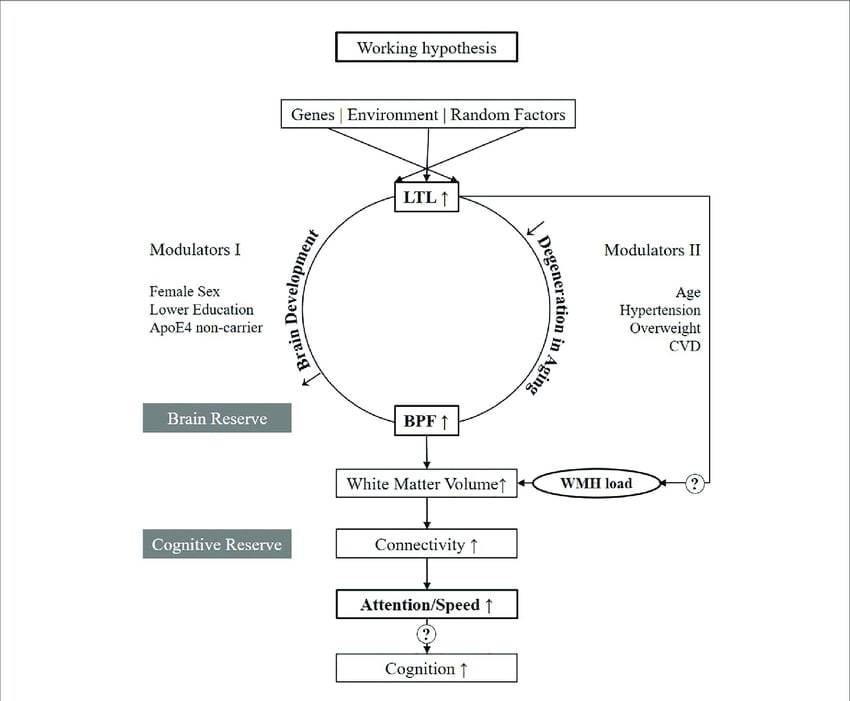
Image Source: researchgate.net
5.Descriptive Categories
A descriptive category is a broad classification. It can be a collection name, production company, or genre. It is used as the first part of a supplied title in the catalog to group works together.
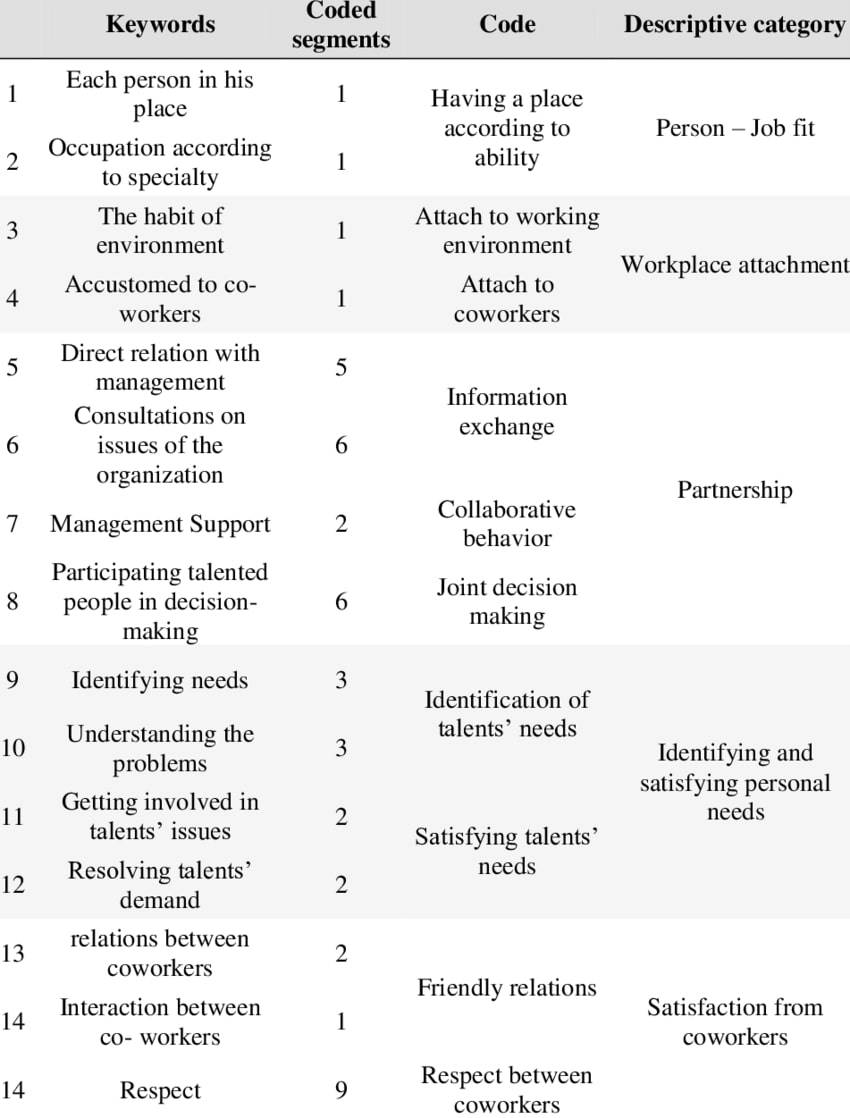
Image Source: researchgate.net
6.Pillar Questions
A content pillar is a substantial and informative piece of content on a specific topic or theme. It can be divided into numerous subsidiary sections, pieces, and materials. Some of the examples of content pillars are reports, eBooks, and guides.
7.Practical Type
A practical type framework, as evident from its name, checks the “practicality” of a concept. It works to test how a question in an ideal scenario relates to the real world. Thus, helping researchers bridge the gap between theoretical concepts and their practical realities.
8. Models Of Operations Research
The majority of operations research studies involve the development of a mathematical model. Operations research models are a collection of logical and mathematical relationships. These represent aspects of the situation under investigation.
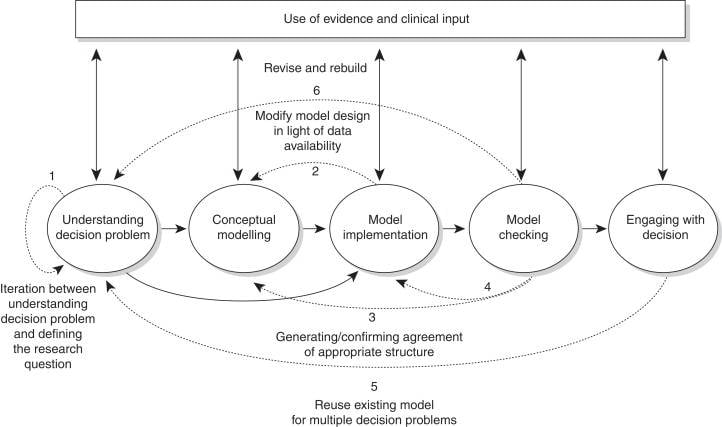
Image Source: Sciencedirect.net
9. Formal Hypothesis
A formal hypothesis is an educated guess about how the research question will turn out. It should be written in simple, easy-to-understand language.
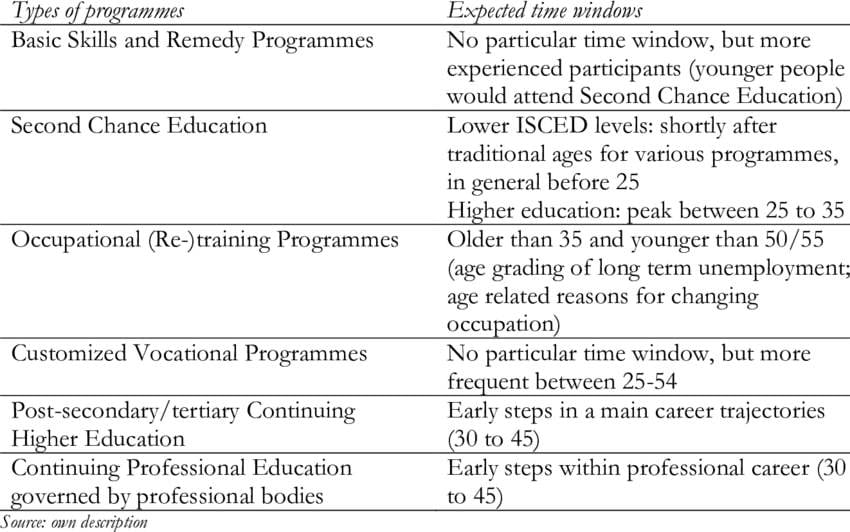
Image Source: researchgate.net
Conceptual Framework vs. Theoretical Framework
Both the theoretical and the conceptual frameworks are important for the research study. Any research without the two increases the risk of unaligned results. Readers can have difficulty understanding the underlying factors of the hypotheses. This makes the research unprofessional and sloppy.
The theoretical framework guides the research by referencing established theories and concepts. It determines what concepts to cover and how to measure them. It offers a general representation of the relationship between things. It lies on a much broader scale of resolution. It builds upon already established and time-tested theories and proven studies.
Example: Social Learning Theory
On the other hand, the conceptual framework is more flexible. It oversees the interaction of concepts in a study. It describes the relationship between specific variables, outlining the investigation. Thus, in a conceptual framework, you develop hypotheses based on your theory instead of using others' work.
Example: A study focusing on the interaction between academic performance and socioeconomic status.
Conceptual Framework Examples
Conceptual framework examples guide users in real-time on their various contextual uses. It can also aid in understanding how all the elements come together in the framework. Below are some examples showing application in various areas:
Example 1: DNP Conceptual Framework
The Doctor of Nursing Practice conceptual framework template is useful in many ways. They can benefit the students, nurse educators, and patients. This can guide any nursing educator intending to design and deliver DNP programs. The primary goal of a DNP Conceptual Framework is to help students practice nursing.
Example 2: Website Conceptual Framework
A Website Conceptual Framework template can help you develop websites. All while saving time and effort in the designing process. It would be best to have this template before you start coding. This framework gives you an idea of the components of a website. Those components can be the home page, navigation, services, and about pages.
Through this, you’ll know where to put things and will be able to keep everything organized in your head. It can act as an essential part of website design and help avoid poorly prepared websites.
Example 3: Conceptual Framework for Research
The diagram below shows how several factors affect consumer satisfaction in internet shopping. It means that as the customer's experience improves, their satisfaction increases.
The information quality differential represents the relevant information available on a website. The system quality differential shows how well-managed the site is. The site's quality depends on its effective customer support. The service quality differential displays the effectiveness of customer service at a site. That is usually done through email and chat features.
These variables are interconnected. Especially as they are all part of an efficient user experience. The more satisfied the user is, the better their experience is.
Example 4: Conceptual Framework for Stocks
Here, it illustrates how the independent variable affects the dependent variable. Different intervening variables are affecting the results each time. This conveys the rapid and unpredictable ups and downs of the stock market. A diagram like this reiterates the importance of conceptual frameworks, especially in predicting variable relationships.
Key Steps to Making a Conceptual Framework (Before Using Software)
Now that you’re aware of the essential elements of conceptual frameworks. Your next line of questioning should be how to develop them.
Here are the steps to draft a conceptual framework before creating a visual diagram:
Step1 Select a research question
This is the most crucial step as it guides the entire research. The research question lays the foundation of the study. This makes it essential to invest time and effort in formulating a solid hypothesis. It should be clear, focused, and relevant to your academic background. When selecting a research question, consider:
- Identifying your area of interest
- Reviewing existing literature
- Consider the significance or implications
- Make it focused and specific
- Formulate the question
- Seek feedback
Step2 Choose independent and dependent variables
The independent variables (cause) are the factors that you manipulate in a study. They are in your control and are the influencers towards the dependent variables. In a conceptual framework diagram, they’re typically placed at the left of the model.
For example, in a study on academic performance, the IV might be:
- Class environment
- Teaching methods
- Study hours per week
However, the dependent variables (effect) are outcomes we want to predict in our study. They are the results of the manipulation of IV. Dependent variables should be easy to measure either quantitatively or qualitatively. That usually depends on the study design.
Using the above example, the DV might be:
- Student grades
- Recall and retention
- Test scores
Step3 Determine cause and effect relationships
Identifying how your independent variables are influencing dependent variables is crucial. Determining this cause-and-effect relationship can help identify the direction of the relationship. The direction can either be positive or negative. If one variable increases with the other, it's a positive relationship. However, if the other decreases, it's a negative relationship.
Step4 Identify other influencing variables
Many other factors affect the results of a study other than the independent and dependent variables. These are also important to understand and consider beforehand. Ignoring them can cause the research to deviate from the main question.
- Moderating variable: This affects the strength or direction of the relationship between IV and DV. For instance, a student's motivation level.
- Mediator variables: These variables explain how or why an independent variable affects the dependent variable. An example of a mediator could be: student engagement level.
- Control variables: These are kept constant and controlled or identified before the study. This is done to avoid influencing the independent or dependent variables.
- Example: In a study evaluating academic performance, a control variable might be “age of the students”.
- Confounding variables: A type of variable that can’t be controlled or measured before the study. It may or may not affect the results. E.g., mental fatigue in students.
How to Make a Conceptual Framework on EdrawMax?
Constructing a conceptual framework manually can be time-consuming. You will have to make a lot of calculations as well as sketch each object to proportion. This leaves room for far too many mistakes. EdrawMax, an effective visual workstation, is the perfect application for such complex tasks. It can aid in the visualization of complicated designs for simpler comprehension. It is compatible with Windows, Mac, and Linux and comes with a plethora of design options.
To make a conceptual framework in EdrawMax, simply follow the steps below.
Step1 Open EdrawMax and Login
- Download and install EdrawMax on your device.
- You can also use the application through its online version as a quicker alternative.
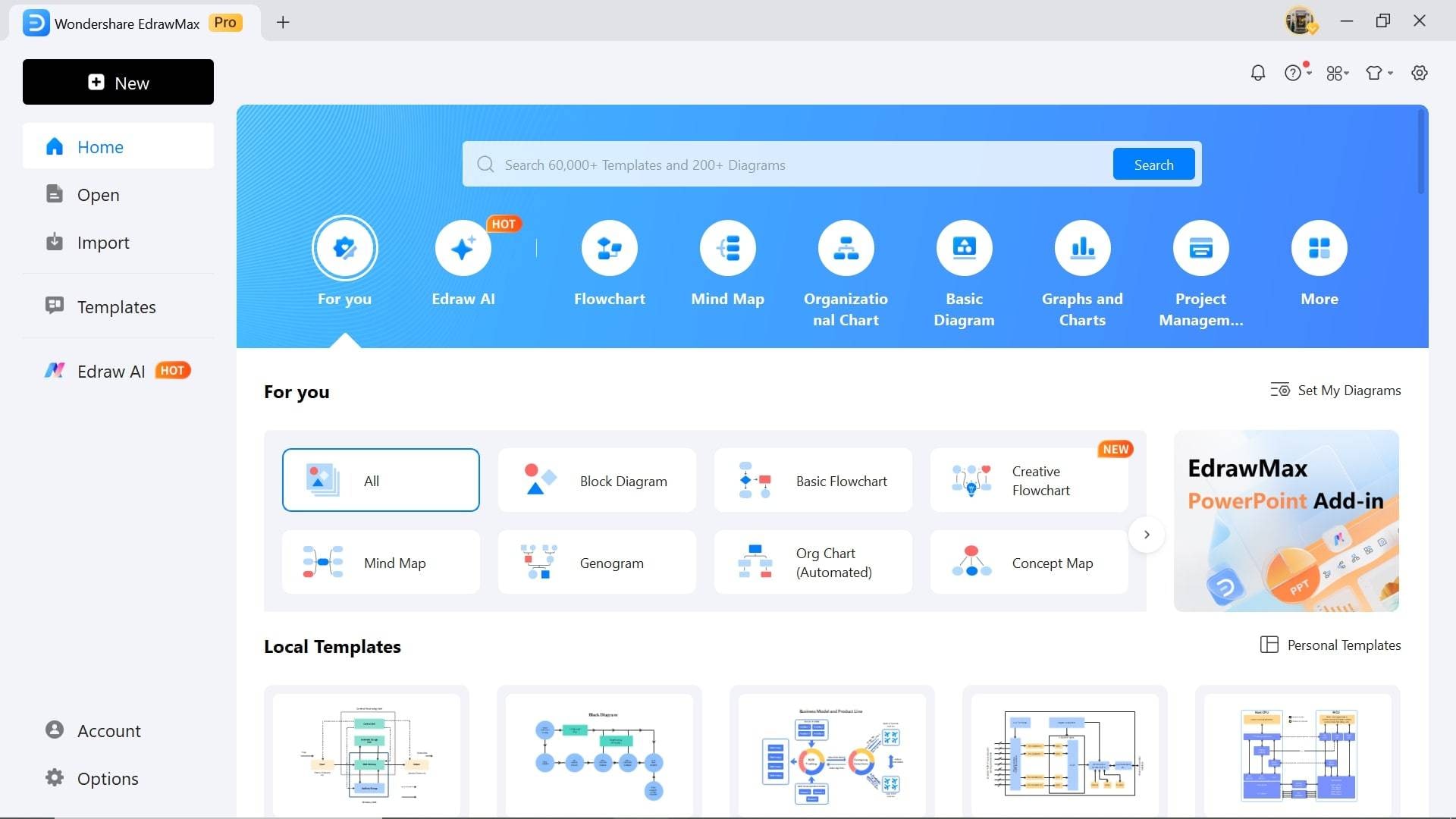
Step2 Select a Template
- On the homepage, head to the Templates bar.
- Search for Conceptual Framework in the search box.
- Choose from the plethora of built-in templates according to your interest.
- Click Use Immediately to open it in a new window for customization.
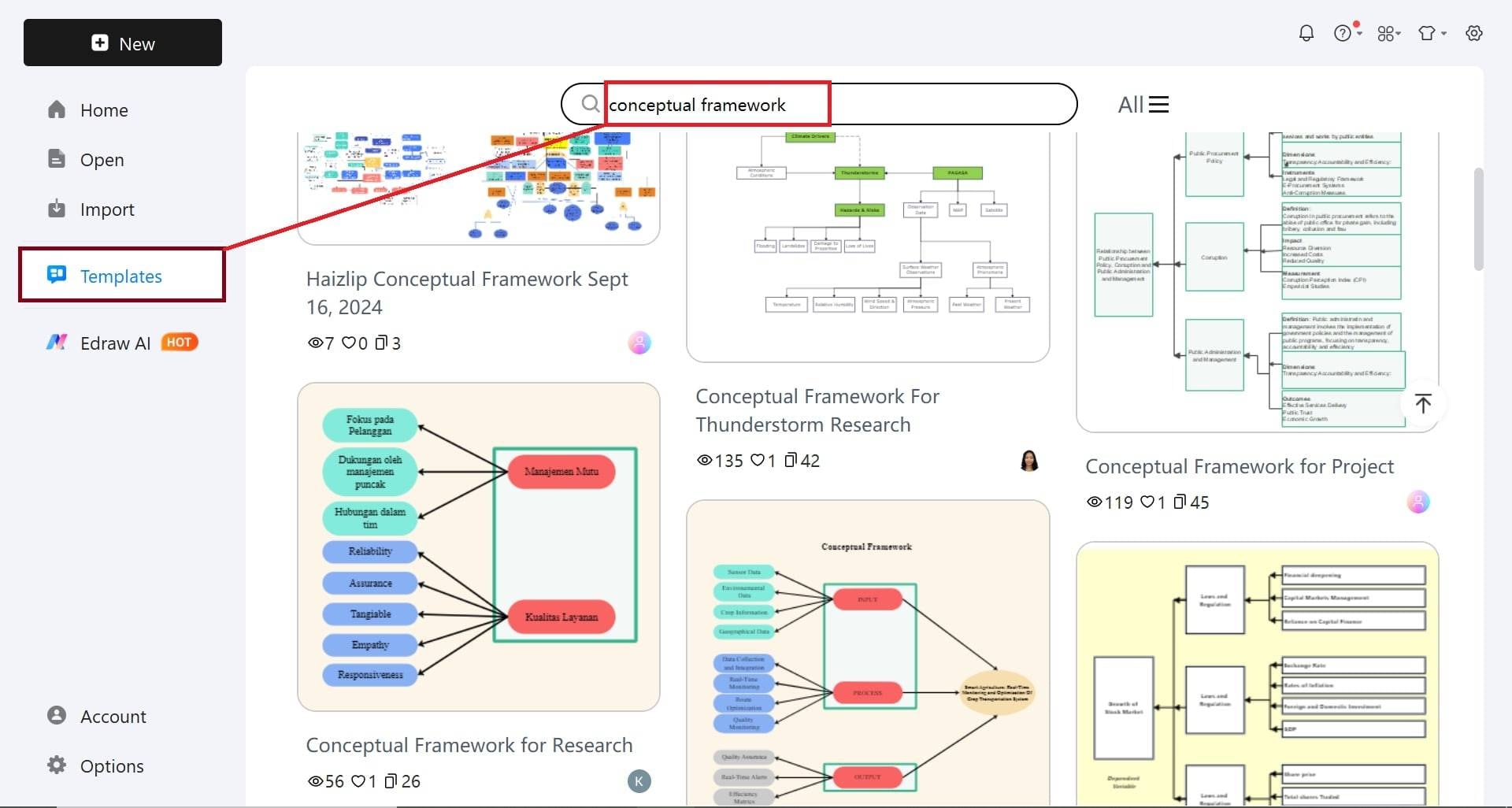
Step3 Create from Scratch
- Alternatively, if you have the skills to create a conceptual framework from scratch
- Navigate to the For You templates on the homepage.
- Find Circle Spoke Diagram.
- Head to the Blank Drawing option below. It takes you right to the canvas board.
- From there, you can start designing the conceptual framework from scratch.
Coupled with your technical expertise, you can use this wide range of symbols to draw a detailed conceptual framework.
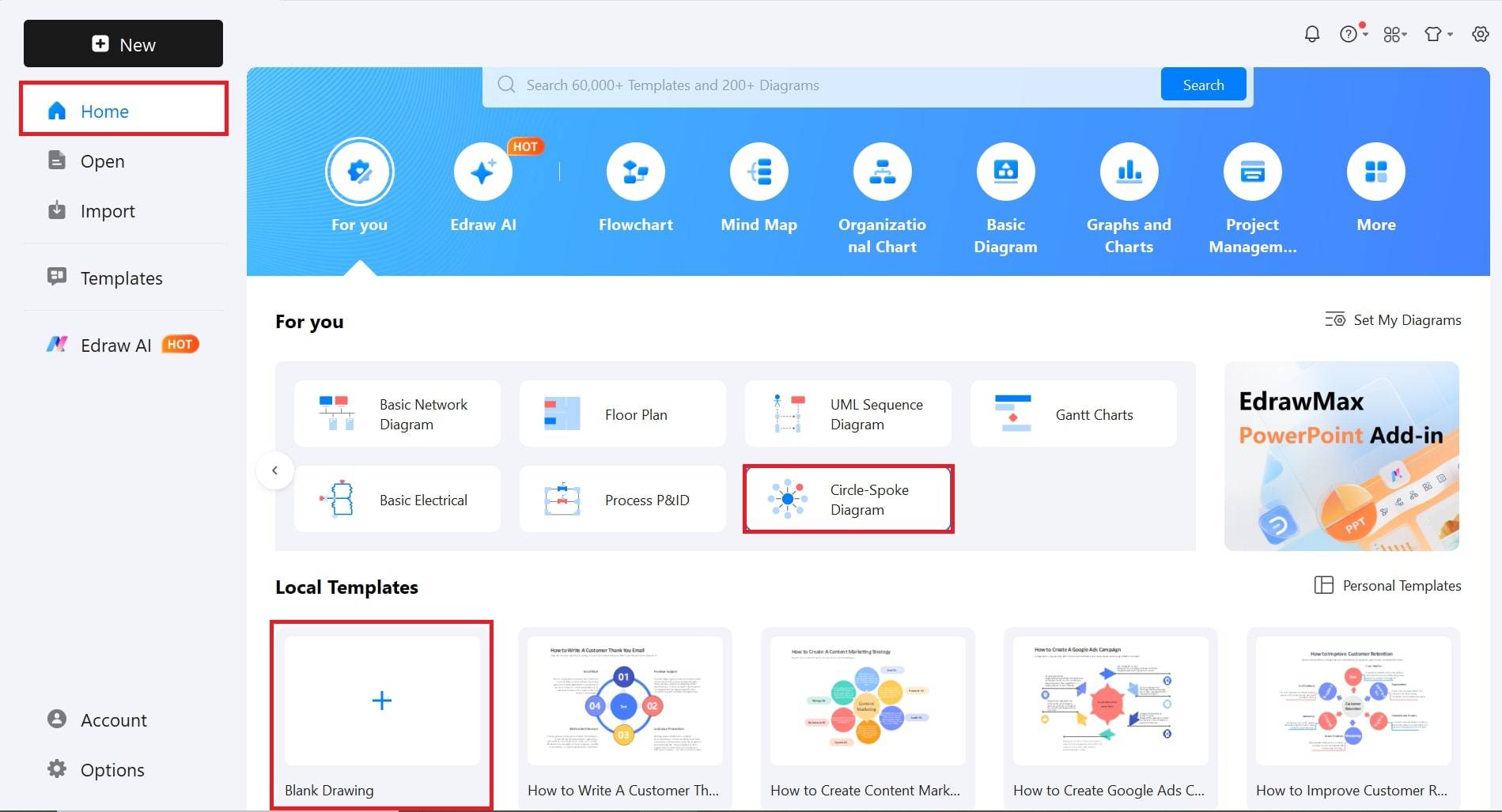
Step4 Select Symbols
- Simply go to the Symbols library on the left panel.
- Select More Symbols from the toolbar.
- Hundreds of symbol categories will be accessible to you. Simply use and incorporate into your conceptual framework.
- Select any symbol you want to add and click OK.
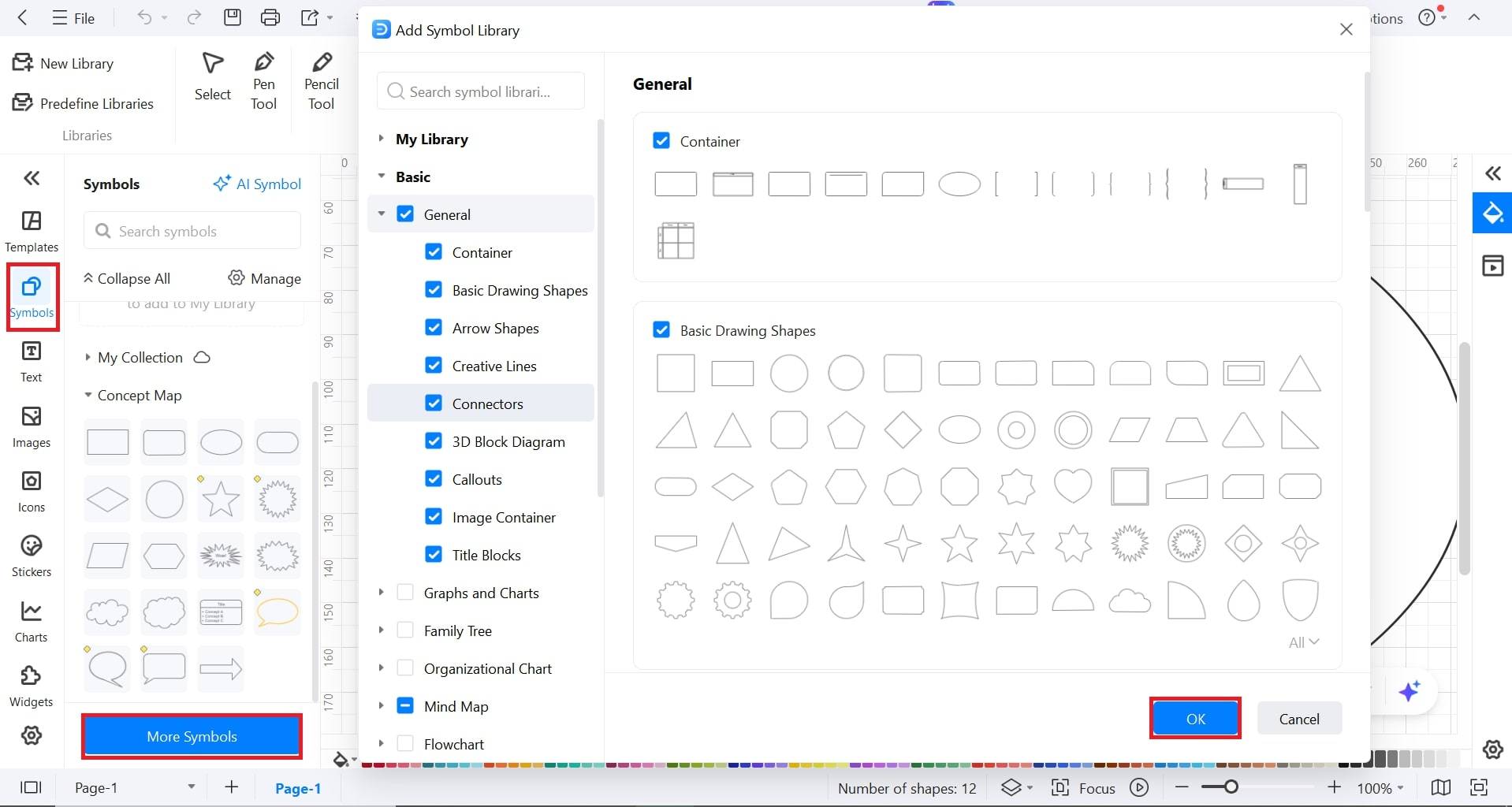
Step5 Add Components
- After you have sketched out the basic pieces, you may start customizing. You can personalize the typefaces, colors, or any other details.
- You can do so by selecting the right or top menu.
- Once there, choose your pick from:
- Shapes
- Line Presets
- Containers
- Pictures
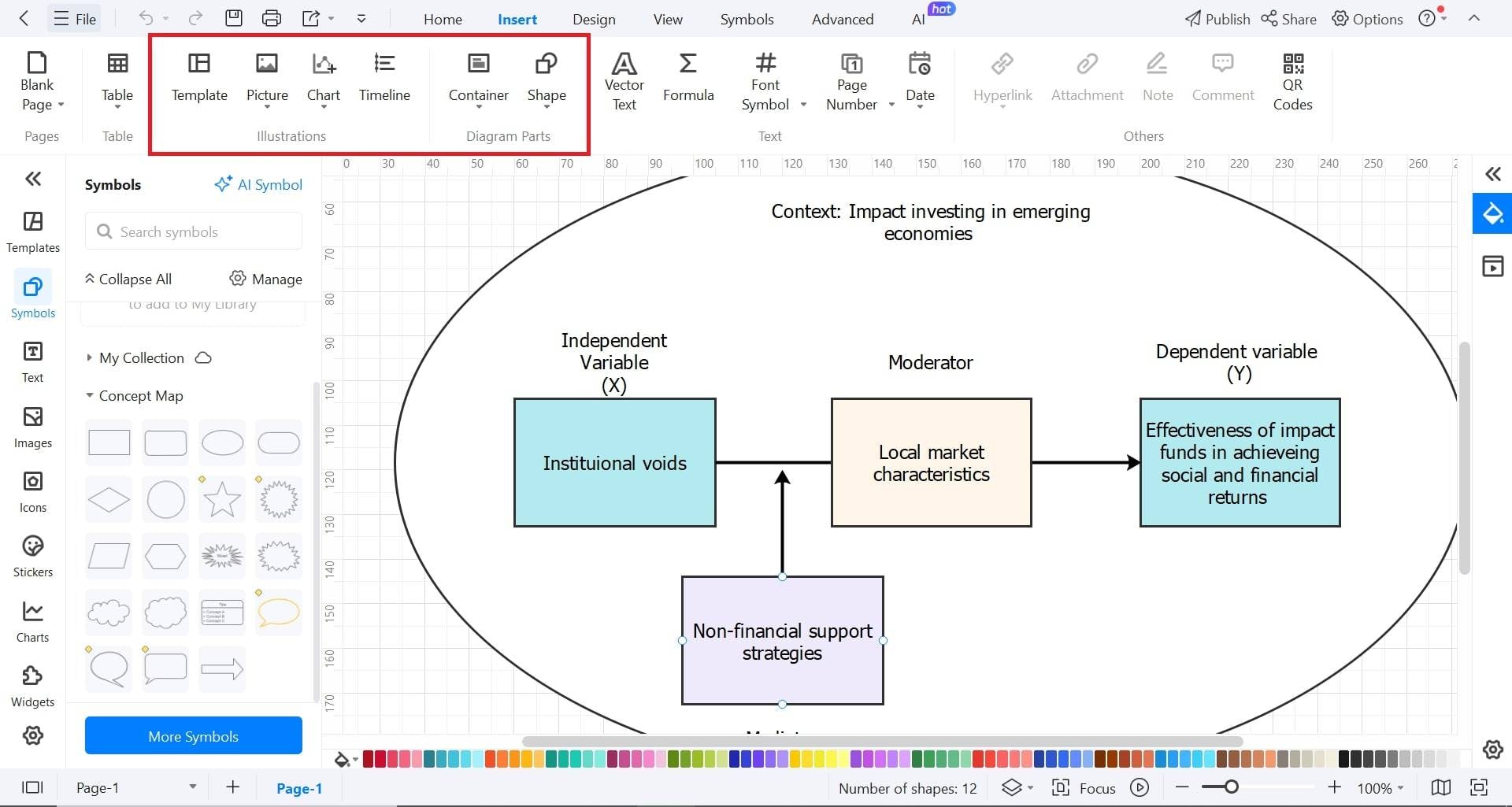
Step6 Finalizing the Framework
- Once your conceptual framework is ready, you can collaborate with your team on it. Head to the Share button on the top-right menu to invite collaborators.
- Or you can simply save your work on your device or EdrawMax’s cloud-based storage.
- It supports files in several formats, including HTML, PDF, Graphics, Visio, and Microsoft Office.
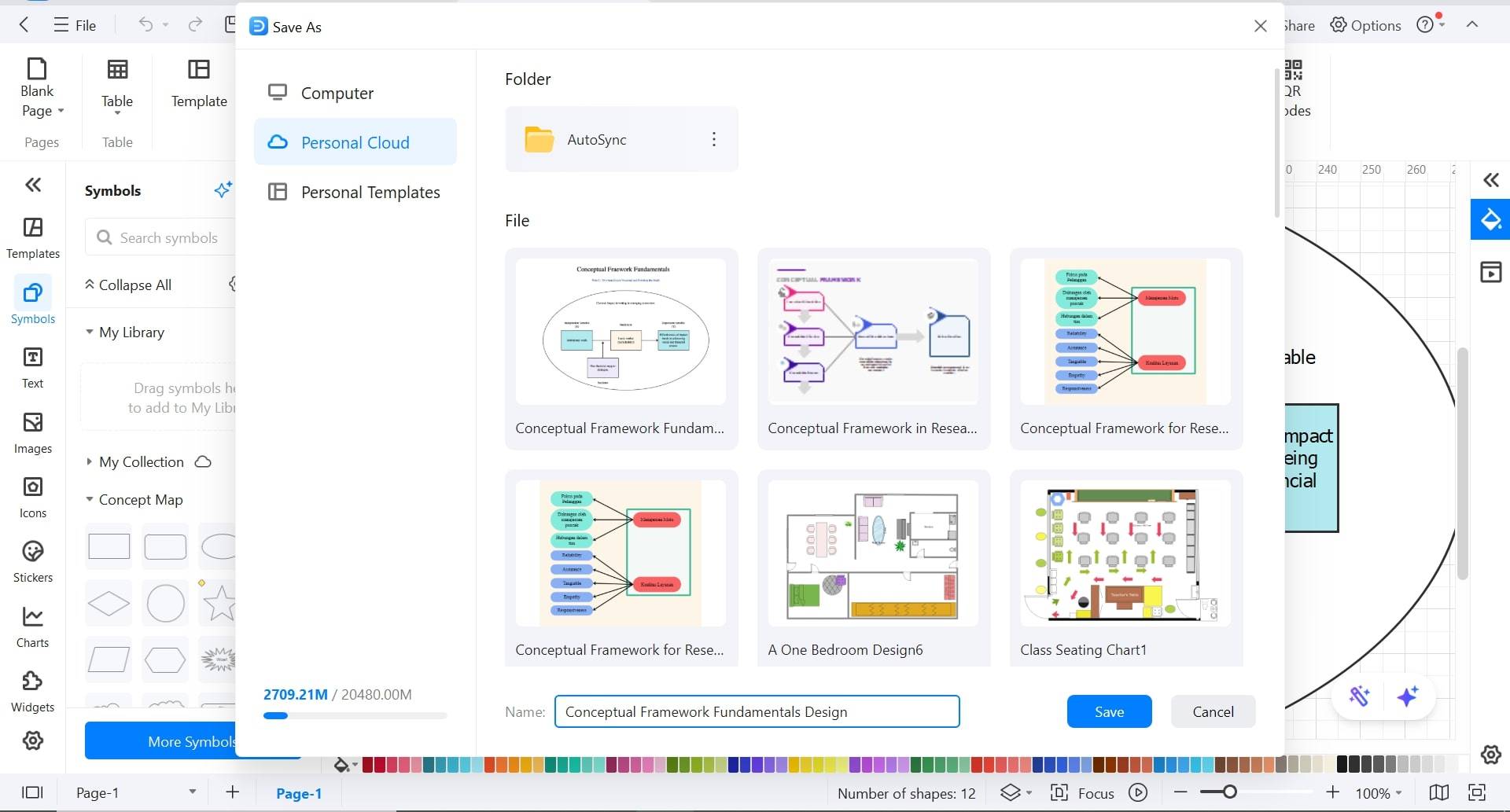
Advantages and Disadvantages of a Conceptual Framework
Conceptual frameworks serve as a blueprint for qualitative research. However, it can’t be denied that some limitations are also present. Let’s have a look at its strongest pros and cons:
Final Thoughts
A well-constructed conceptual framework is a critical part of research. Not only does it make the study easier, but it also strengthens the integrity of your research. By employing these diagrams, researchers can approach their studies with clarity and direction.
Different users prefer different methods to draft their conceptual framework. Whether you’re writing one manually or using tools like EdrawMax, investing time in a solid conceptual framework is essential. It ensures your research is organized, impactful, and easier to communicate to others.
